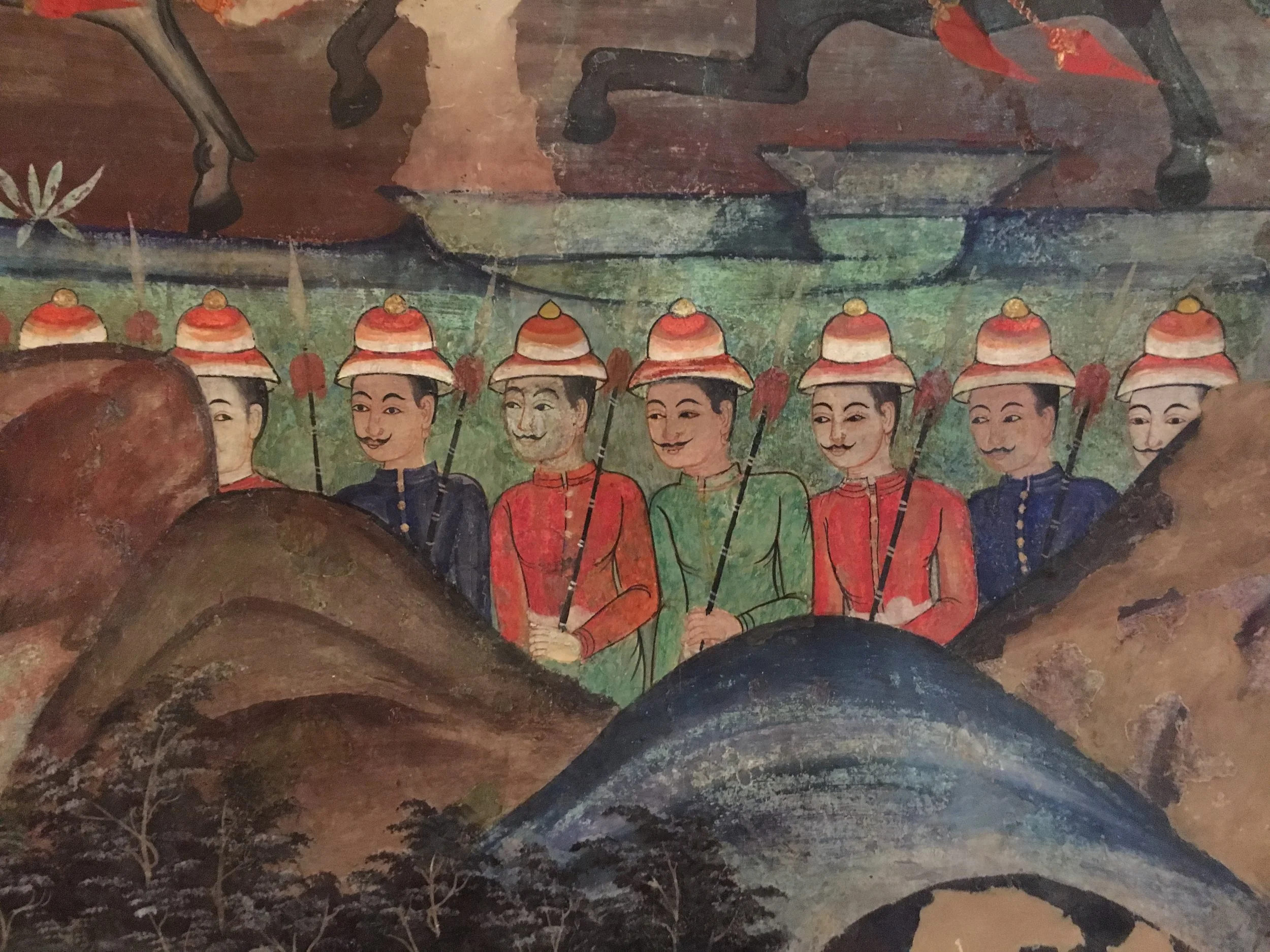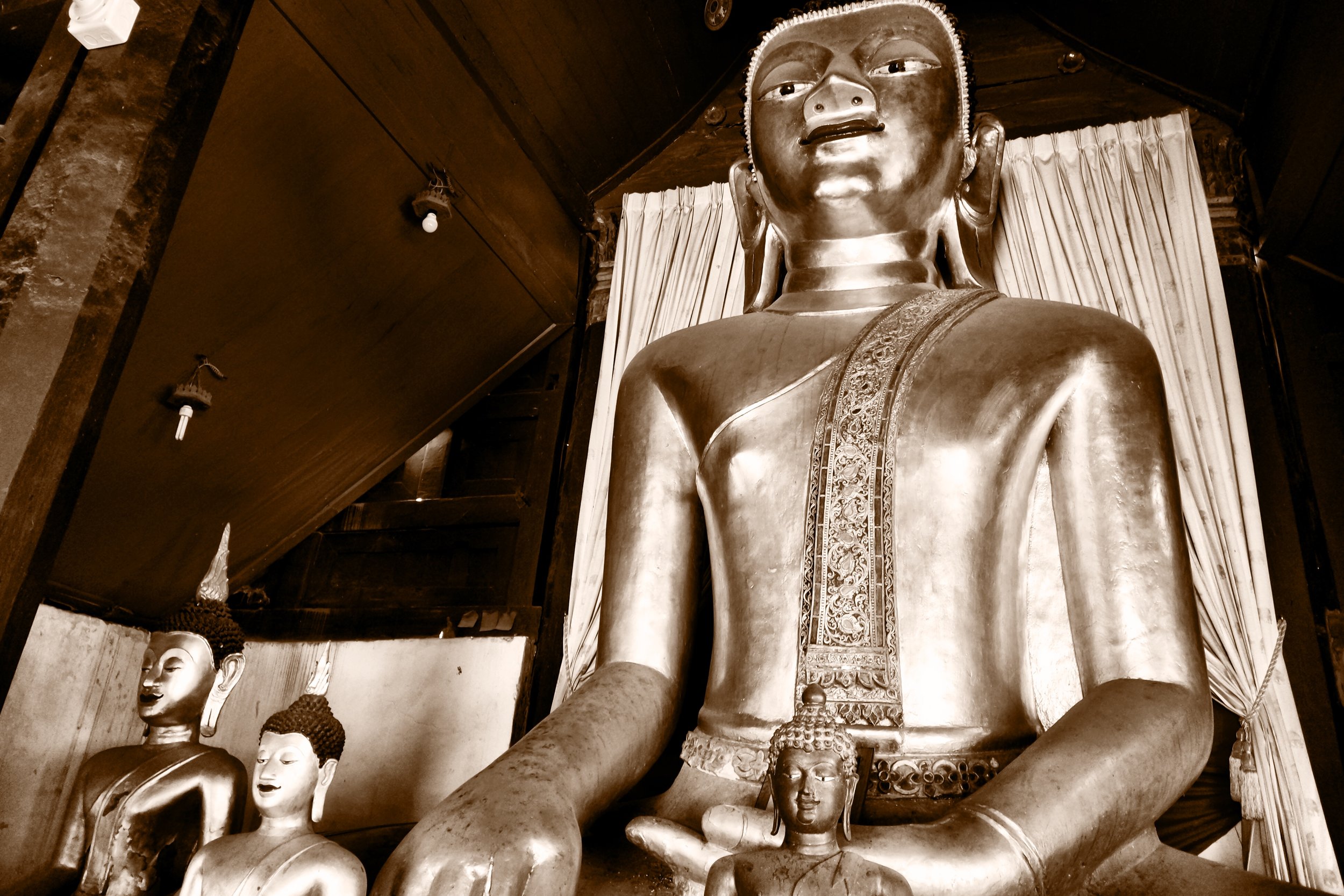From its roots as the capital of the Lanna Kingdom to its incorporation into Siam.
Elephants have always played an important role in Chiang Mai’s history, used for transport and as beasts of burden in the teak trade
When Wally and I decided to make the city of Chiang Mai, Thailand our destination, I was eager to learn about its history and pondered what strange spell it would cast on me.
Nestled among the rolling green mountains of Northern Thailand, Nopburi Si Nakhon Ping Chiang Mai, since shortened to the much more manageable Chiang Mai, was founded by the King Mengrai in 1296. Its name translates as New Walled City. The city became the new capital, its site chosen because of the auspicious presence of herds of spotted deer, white mice and a giant fig tree.
The Three Kings Monument in Chiang Mai — that’s Mengrai in the middle
Mengrai had previously established the city of Chiang Rai and had also conquered Lamphun. Legend has it that King Mengrai, King Ramkhamhaeng of Sukhothai and King Ngam Muang of Phayao formed an alliance and built the new city of Chiang Mai together.
Mengrai’s short-lived previous capital, Wiang Kum Kham, situated about three miles south, was abandoned due to repeated flooding during the intense monsoon rains that caused the Ping River to overflow. The settlement, since buried beneath alluvial sediment, was unearthed in 1984.
Lanna women in traditional garb (hey, it gets hot there!)
Deeper Roots: The Birth of the Lanna Kingdom
The province became known as Lanna, which translates as A Million Rice Fields. At its height, the kingdom's territories spread over an area as far southwest as Tak, the Pai Valley in the west and as far north as Luang Prabang in Laos.
Mengrai reigned from Chiang Mai for 20 years, until his unexpected death in 1317 — according to legend, he was struck dead by a bolt of lightning. For the next two centuries, rulers were chosen from Mengrai’s supposedly divine lineage.
Wat Chedi Luang as it stands today. The building was completed during the reign of King Tilokoraj
There were some greatly distinguished kings of the Mangrai Dynasty, particularly the sixth ruler, King Kuena (1355-1385) and the ninth, King Tilokoraj (1441-1487), both of whom brought about cultural, social and artistic renaissances. They turned their interests to architecture, erecting many Buddhist temples and chedis that are now referred to as classic Lanna style. The mountain temple of Wat Phrathat Doi Suthep remains the spiritual symbol of Chiang Mai today.
An old map of Chiang Mai shows the square city center
Chiang Mai, Where Its Hip to Be Square
The fortified Old City, surrounded by a moat, is square in shape. The remnants of earthen walls with ramparts designed to protect and defend against Burmese invaders still stand, although many have been restored.
The Lanna Kingdom largely functioned autonomously, but became fragile as its principalities expanded, making Chiang Mai a pawn and allowing the Burmese to seize the city in 1556. Abandoned between 1776 and 1791, the former capital was recaptured by Prince Kawila, who began a ritual circumambulation of the city at Wat Buppharam (which has since established a connection to a certain Disney character) to reoccupy it after two centuries of Burmese rule.
Kawila mobilized the diverse segments of the population from all the nearby villages — many had since moved to Lamphun — to resettle in Chiang Mai. The prince led the reconstruction, restoration and renovation of many historic buildings, especially the revered older temples that had been built during the Mengrai Dynasty. He eventually took the throne and established the Chuea Chet Ton Dynasty, meaning the Dynasty of the Seven Lords.
The ancient ramparts that surround the Old City still stand (mostly)
As king, Kawila followed tradition, dressed in full Lanna regalia like all rulers of the Mengrai Dynasty had done in the past, and he entered the Old City through the auspicious northern gate, Pratu Chang Puak, the White Elephant Gate.
Becoming a Part of Siam — But Escaping Colonial Rule
Although Siam (the previous name for Thailand) was never colonized, it felt the pressure from the British, who won the Anglo-Burmese War, annexing Burma in its entirety between 1824-1852. The French, meanwhile, had colonized Laos, Cambodia and Vietnam.
In 1885, the Bowring Treaty was negotiated and signed, allowing liberal trade between the United Kingdom and Siam. The British were at this time heavily invested in the teak trade and established the Borneo Trading Company headquarters in Chiang Mai’s Wat Gate district, the foreigners’ enclave (where we stayed at the utterly charming Hotel des Artists Ping Silhouette).
A historic shot of a Chiang Mai market. There’s a lot less mud nowadays
The Lanna Kingdom’s political independence ended in the late 19th century with the arrival of the railroad, and it was eventually incorporated into Siam.
Exploring the city’s streets, Wally and I could feel its storied past resonate amongst the shops, cafés, crowds and timeworn temples. –Duke































